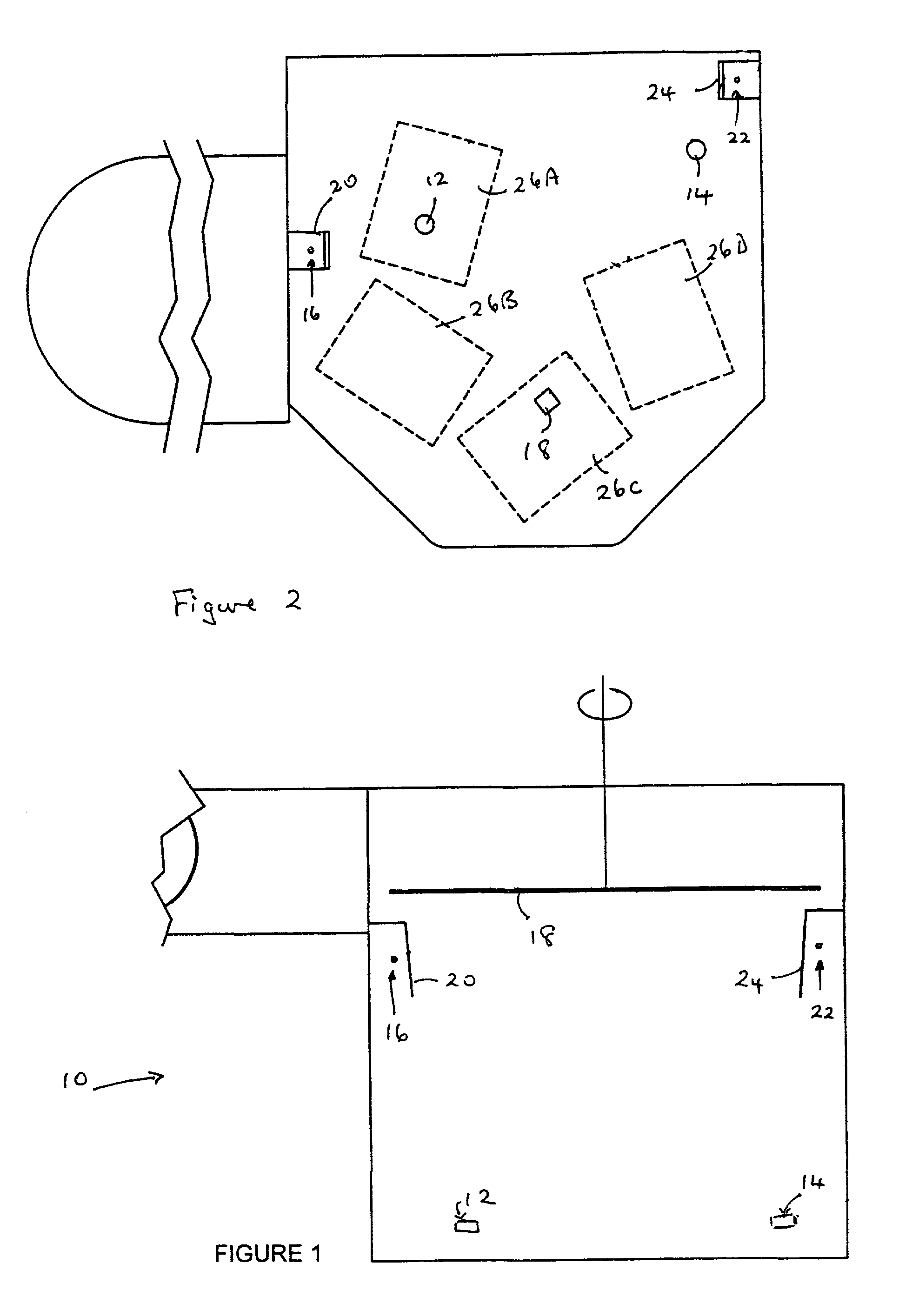Multiple source deposition process
a deposition process and multi-source technology, applied in the direction of vacuum evaporation coating, inorganic insulators, coatings, etc., can solve the problems of increasing the power consumption of the display, reducing reliability, and not achieving the phosphor luminance of the display
- Summary
- Abstract
- Description
- Claims
- Application Information
AI Technical Summary
Problems solved by technology
Method used
Image
Examples
example ii
[0060] A europium-doped calcium thioaluminate phosphor film of the type described in Example 1 with a =0 was formed on a thick film opaque substrate using the dual source method and apparatus described above.
[0061] One of the two source materials used to deposit the phosphor was aluminum sulphide (Al.sub.2S.sub.3) formed into a pellet. This pellet was not annealed. The other source material was a europium-doped calcium sulphide pellet (CaS:Eu). This pellet was annealed at 800.degree. C. for 20 minutes in nitrogen. The diameter and height of each of the Al.sub.2S.sub.3 and CaS:Eu pellets were 2.5 and 1.8 centimeters, respectively. The pellets were slowly degassed and preconditioned with a low electron beam current from their respective electron guns.
[0062] The substrate was alumina upon which a gold electrode pattern was deposited and overlaid with a high dielectric constant thick film dielectric layer comprising PMN-PT coated with lead zirconate-titanate, and further overlaid with a...
example iii
[0067] A phosphor film was prepared using the material described in Example 1 with a=1. The procedure used was the same as that described in Example I. For this phosphor, one pellet was formed from Al.sub.2S.sub.3 and the other pellet was formed from the required mixture of barium sulphide and europium sulphide. The thickness of the BaAl.sub.2S.sub.4:Eu phosphor film was 2700 Angstroms, measured using scanning electron microscopy.
[0068] As reported in Example I, for the composition corresponding to a=0, i.e. CaAl.sub.2S.sub.4:Eu, and using an excitation frequency of 120 Hz and a pulse width of 30.mu. seconds, the electroluminescent pixel had a brightness of 90 cd / m.sup.2 at 70 volts above the threshold voltage of 180 volts while its CIE colour coordinates were x=0.19 and y=0.62. This is reasonably similar to the photoluminescence values observed for the pellets having the same nominal composition.
[0069] For the composition corresponding to a=1, i.e. BaAl.sub.2S.sub.4:Eu, the luminan...
PUM
| Property | Measurement | Unit |
|---|---|---|
| height | aaaaa | aaaaa |
| diameter | aaaaa | aaaaa |
| height | aaaaa | aaaaa |
Abstract
Description
Claims
Application Information
 Login to View More
Login to View More - R&D
- Intellectual Property
- Life Sciences
- Materials
- Tech Scout
- Unparalleled Data Quality
- Higher Quality Content
- 60% Fewer Hallucinations
Browse by: Latest US Patents, China's latest patents, Technical Efficacy Thesaurus, Application Domain, Technology Topic, Popular Technical Reports.
© 2025 PatSnap. All rights reserved.Legal|Privacy policy|Modern Slavery Act Transparency Statement|Sitemap|About US| Contact US: help@patsnap.com



